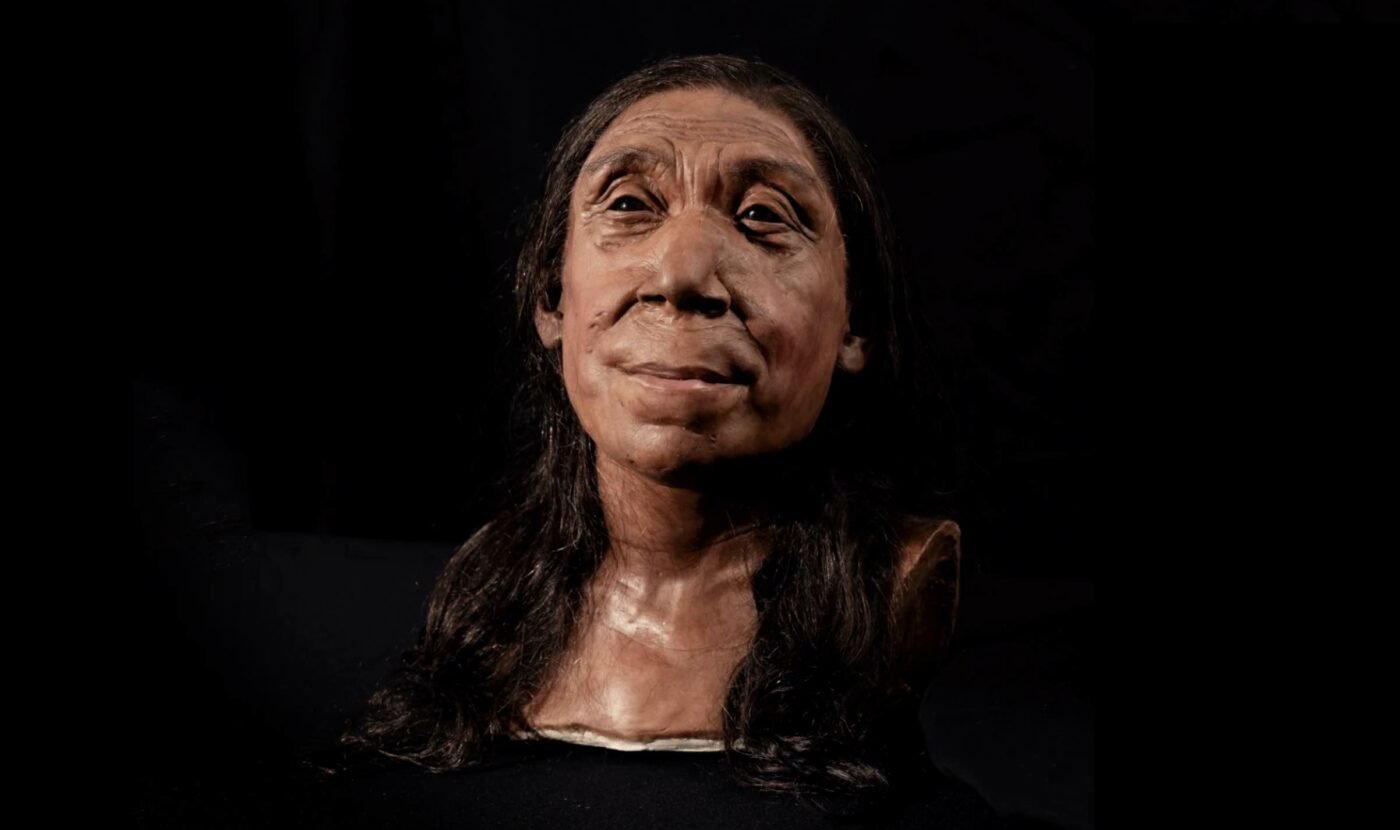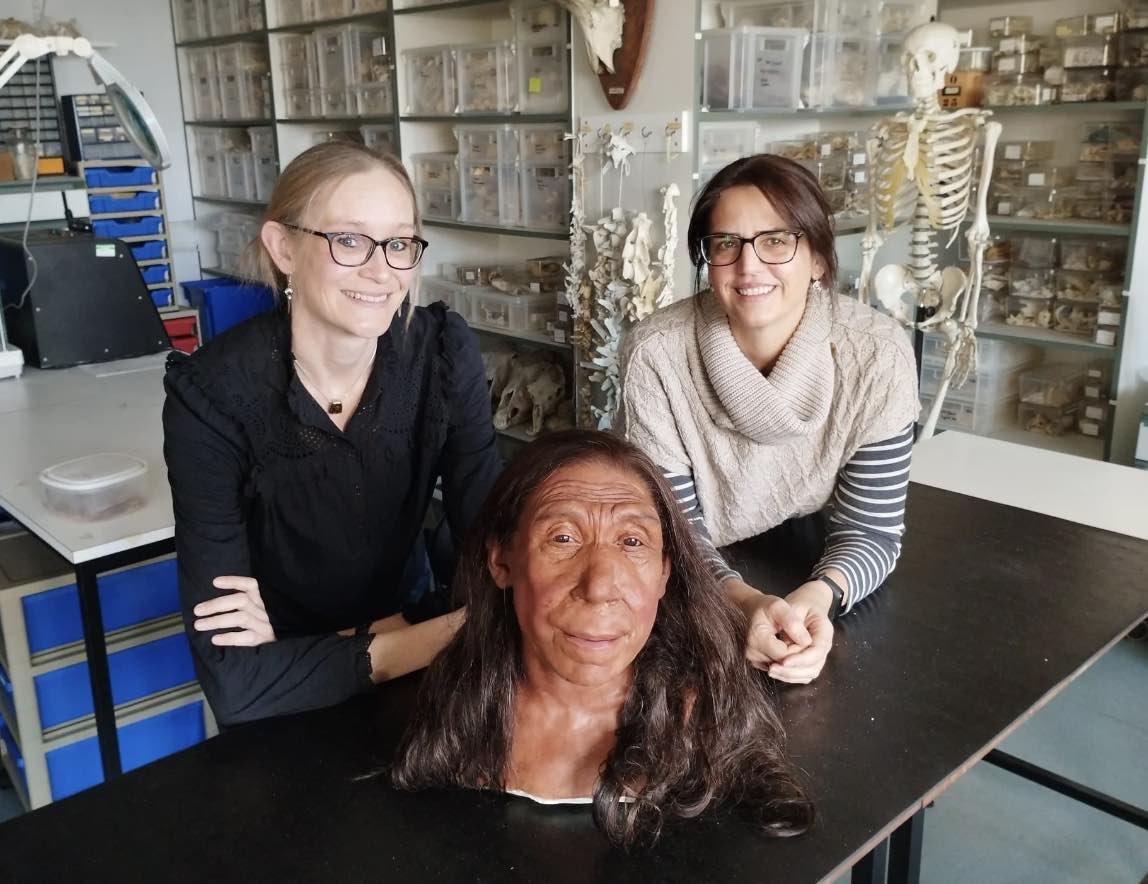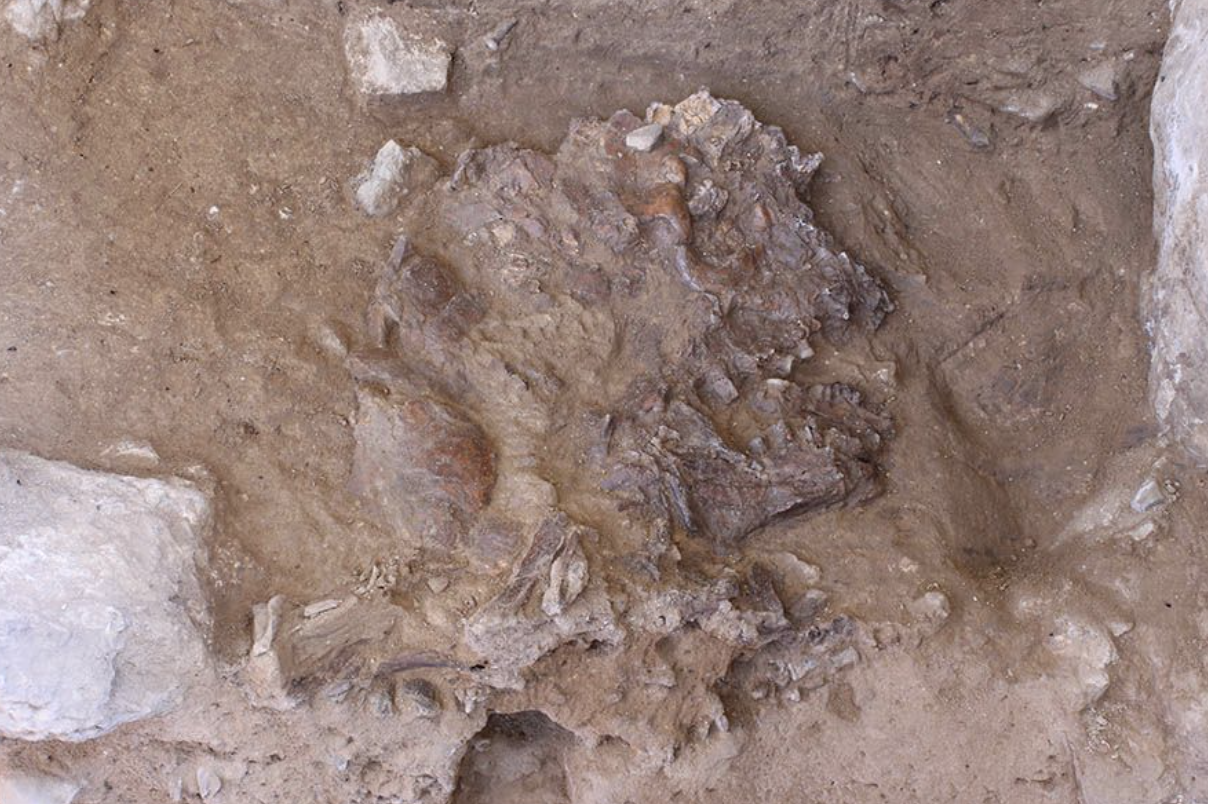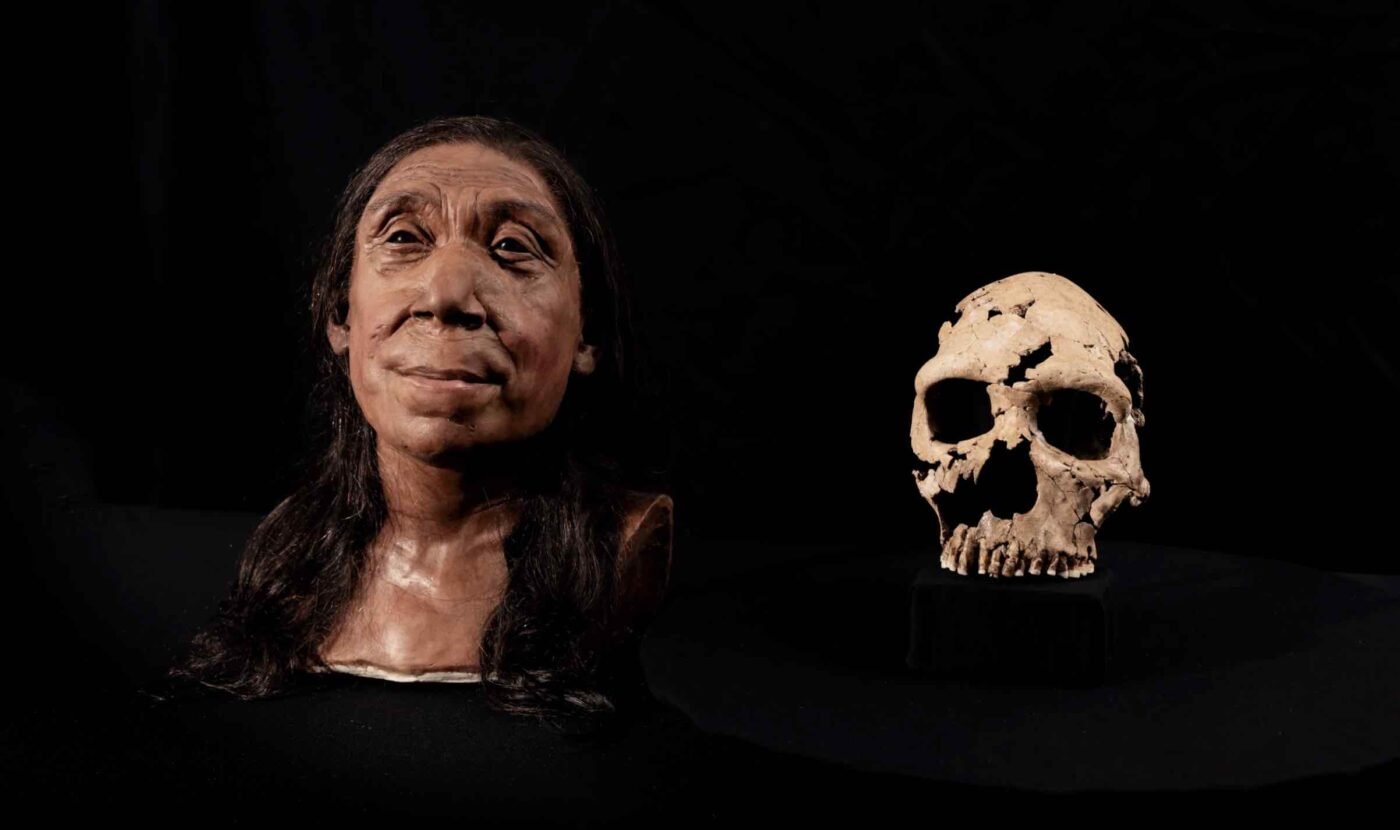
Posted on 05/03/2024 11:17:40 AM PDT by Red Badger

In 2018, a female Neanderthal was discovered in the Shanidar Cave in Iraqi Kurdistan. Now, archaeologists from The University of Cambridge have unveiled the reconstructed face of the 75,000-year-old woman, based on the assembly of hundreds of individual bone fragments recovered during excavations.
“Neanderthals have had a bad press ever since the first ones were found over 150 years ago,” said Professor Graeme Barker from Cambridge’s McDonald Institute for Archaeological Research, who led the excavation at the cave where the woman’s remains were discovered. Neanderthals are believed to have become extinct around 40,000 years ago, and discoveries of their remains are relatively rare.
Named Shanidar Z after the location where her flattened skull was found, the woman’s remains were discovered in an area where the species had repeatedly returned to bury their dead. Believed to have been in her mid-40s based on data obtained from sequencing of tooth enamel proteins that also helped determine her sex, the Neanderthal woman was found in a sleeping position under a huge vertical stone marker.
 The Shanidar Z skull (Image Credit: University of Cambridge).
The Shanidar Z skull (Image Credit: University of Cambridge).
Standing at just five feet tall and possessing some of the smallest adult arm bones found in the Neanderthal fossil record, her physical characteristics also suggest she was female.
“The skulls of Neanderthals and humans look very different,” says Dr. Emma Pomeroy, a palaeo-anthropologist from Cambridge’s Department of Archaeology. Neanderthal skulls have huge brow ridges and lack chins, with a projecting midface that results in more prominent noses. However, the reconstructed face of the 75,000-year-old Neanderthal woman suggests those differences were not so apparent in life.
“It’s perhaps easier to see how interbreeding occurred between our species,” Pomeroy said of the woman’s likeness to modern humans, “adding that almost everyone alive today still has Neanderthal DNA.”

Dr Emma Pomeroy (left) pictured with Dr Lucía López-Polín alongside the newly reconstructed face of a 75,000 year old Neanderthal woman (Image credit: Emma Pomeroy).
Featured in a new Netflix documentary, “The ‘Secrets of the Neanderthals”, produced by BBC Studios Science, the program follows a team of archeologists from the universities of Cambridge and Liverpool John Moores as they return to Shanidar Cave to continue their excavations and study remnants of our archaic ancestors.
Researchers believe that Shanidar Z could be the upper portion of an individual whose remains were initially found during excavations in 1960. The Neanderthal woman’s death may have resulted from her head being crushed by falling rocks, and soon afterward, the brain decomposed, allowing her skull to fill with soil and become flattened to around two centimeters in thickness, the state in which archeologists discovered the remains in 2018.

The skull of Shanidar Z, flattened by thousands of years of sediment and rock fall, in situ in Shanidar Cave, Iraqi Kurdistan (Credit: Graeme Barker).
The Cambridge team decided the best plan would be to unearth the skeleton, after which they used a glue-like strengthening agent that would help to solidify the bones around the sediment. Shanidar Z was carefully extracted in dozens of small foil-wrapped blocks from deep within the cave, buried under seven and a half meters of soil and rock.
Once the remains were back at Cambridge, lab researchers produced micro-CT scans of each block before gradually diluting the glue and using the scans to guide the extraction of bone fragments.
“Each skull fragment is gently cleaned while glue and consolidant are re-added to stabilise the bone, which can be very soft, similar in consistency to a biscuit dunked in tea,” Pomeroy said in a statement. “It’s like a high stakes 3D jigsaw puzzle. A single block can take over a fortnight to process.”
Crucial work performed by lead conservator Dr. Lucía López-Polín saw the painstaking reassembly of more than 200 skull fragments by hand, which gradually returned portions of the skull to its original shape and form.
 Kennis Brothers Reconstruction and Shanidar Z skull (Image Credit: University of Cambridge).
Kennis Brothers Reconstruction and Shanidar Z skull (Image Credit: University of Cambridge).
The reassembled skull was then surfaced scanned, and a reproduction produced using 3D printing technologies, which was used as the basis for the final reconstruction produced by paleoartists.
“It’s extremely exciting and a massive privilege actually to be able to work with the remains of any individual but especially one as special as her,” Pomeroy told BBC News.
Although remains of at least ten different Neanderthals have been discovered in the cave, Shanidar Z is the fifth found among a group of bodies buried together in close proximity and likely at around the same time.
“It’s always difficult piecing together a highly fragmented skull,” says Michael Masters Ph.D., a professor of biological anthropology at Montana Technological University in Butte, Montana.
“The debate surrounding Sahelanthropus tchadensis as a member of the hominin clade is a good example of what’s at stake in this tenuous pursuit,” said Masters, who was not directly involved in the recent reconstruction effort, in an email to The Debrief.
“However, with new technologies and methodologies, such as those used by the Cambridge lab to reconstruct the 200 highly fragmented pieces crushed by rockfall and millennia of sedimentation, it is possible to get an accurate depiction of who this Neanderthal woman from 75,000 years ago was and what she looked like, which further adds to our understanding of this fascinating human subspecies.”
Chrissy Newton is a PR professional and founder of VOCAB Communications. She hosts the Rebelliously Curious podcast, which can be found on The Debrief’s YouTube Channel. Follow her on X: @ChrissyNewton and at chrissynewton.com.
Looks like they used whoopie goldberg as the model.
Did they get it right or did they add a little DEI ?
Funny how liberals think every one of ancient times has pigmented skin.
Finally somebody said it......................
If an “ape”, they were an ape with brains larger than ours that were apparently capable of producing, with Homo Sapiens partners, viable and fertile offsprings. All that suggests, genetically speaking, a branch of our species. Fertile products of interspecies breeding are extremely rare. As are animals that care for injured members and bury the dead with ceremony.
The African Genesis theory was a big thing starting in the 1960s. It seems that has fallen apart as well.
~~~~~~~~~~~~~~~~~~~~~~~~~~~~~~~~~~~~~~~~~~~~~~
Neanderthals were rapidly made extinct, along with archaic Homo sapiens, by the invasion of new Homo sapiens, sometimes referred to as Cro Magnon, who were the first "Humans" having power of cognitive thought (i.e., abstract thought including language). This was accompanied by a critical genetic marker known as the D-allele.
As we know, there was a limited amount of cross-breeding; but, it is more likely that was between Neanderthal and archaic Homo sapiens, who then had limited reproductive contact with the new, genius breed.
This invasion of our mentally-modern (as opposed to anatomically modern) human ancestors entered the world in north-central Eurasia somewhere around 40,000 years ago.
So there is some demonstrable success that has been correlated in modern times with actual skeletal remains compared to known living photos or video.
I recall seeing stories about success of “aging” done speculatively with photos of missing crime suspects, to simulate what they might now look like in appearance and help catch them. I wondered if this was an analogue branch of that. Thanks.
Ping.
i’d like to see one of them make a CT model of a living person’s skull and see how close they come to doing that one...
~~~~~~~~~~~~~~~~~~~~~~~~~~~~~~~~~~~~~
Not in Woke World.
I thought this was going to be about Helen Thomas.

There used to be a guy at the local county fair that had a computer that would do an aging of you in real time.
You would sit in front of a camera and then the computer would age your picture as far as 100 years old.................
Would Laz hit it?
20 artists would come up with 20 distinctive faces. There’s no “truth” in this beyond “structure”.
That’s a very good idea. But....give them 5 to do....one month apart. We all have patterns...and so do these “artists”.
Interbreeding? 12 pack and in my 20s I’d have hit it.
2 Bagger....................
Disclaimer: Opinions posted on Free Republic are those of the individual posters and do not necessarily represent the opinion of Free Republic or its management. All materials posted herein are protected by copyright law and the exemption for fair use of copyrighted works.